39 daily values on food labels
Percent daily value - Canada.ca dividing the amount of a nutrient in a serving size by its daily value, then multiplying that number by 100 For example, a food product has 3 mg of iron. The daily value for iron is 14 mg. This means that the % DV for iron would be 21%. If you would like to do your own calculation, use the equation below to help you. (3 mg ÷ 14 mg) × 100 = 21% DV Table of Daily Values - Canada.ca This document is a two-part table that sets out the recommended amounts of nutrients (the daily value) for specific age groups. These are the reference points upon which the % daily value in the nutrition facts table are based. Part 1 of the table sets out the daily values for macronutrients and sodium for two age groups.
Daily Values (DVs) - National Institutes of Health However, one value for each nutrient, known as the Daily Value (DV), is selected for the labels of dietary supplements and foods. A DV is often, but not always, similar to one's RDA or AI for that nutrient. DVs were developed by the U.S. Food and Drug Administration (FDA) to help consumers determine the level of various nutrients in a standard ...
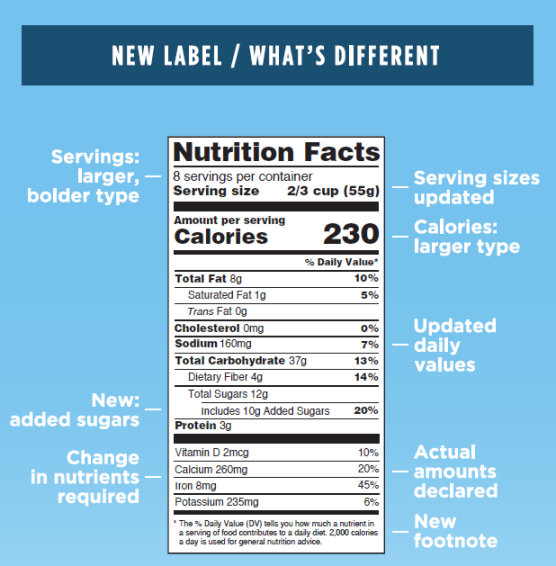
Daily values on food labels
Nutrition Labelling - Table of Daily Values - Canada.ca Food intended for children one year of age or older but less than four years of age or for children four years of age or older and adults. 1. Fat. 44 g. 75 g. 2. Sum of saturated fatty acids and trans fatty acids. 10 g. 20 g. Daily Value: Definition and How to Calculate It - Insider Found on the nutrition label, the daily value system tells you can help you determine if a product is high or low in particular nutrients. What does daily value mean? Daily value (DV) refers to how much of a nutrient you should consume each day based on a 2,000 calorie diet. You can find daily values for a range of nutrients on the FDA's website. The Lows and Highs of Percent Daily Value on the Label The percent Daily Value (%DV) shows how much a nutrient in a serving of food contributes to a total daily diet. The %DV can help you determine if a serving of food is high or low in a nutrient. The...
Daily values on food labels. How to Calculate % of Daily Value on Food Labels | livestrong Step 1 Find the nutrient amount on the food label. Step 2 Look up the total daily recommended amount in the USDA Dietary Guidelines. Step 3 Divide the nutrient amount by the total daily recommended value. Step 4 Multiply by 100. Things You'll Need United States Department of Agriculture (USDA) Dietary Guidelines Food label Calculator Tip Interactive Nutrition Facts Label - Food and Drug Administration The Daily Values are reference amounts (in grams, milligrams, or micrograms) of nutrients to consume or not to exceed each day. For example, the Daily Value for saturated fat is less than 20 grams (g) per day (based on a 2,000 calorie daily diet), which equals 100% DV. If the Nutrition Facts label says one serving of a food contains 1.5 g of ... Understanding Food Nutrition Labels | American Heart Association 5 - Understand % Daily Value. The % Daily Value (DV) tells you the percentage of each nutrient in a single serving, in terms of the daily recommended amount. ... When the Nutrition Facts label says a food contains "0 g" of trans fat, but includes "partially hydrogenated oil" in the ingredient list, it means the food contains some trans ... Food Labels: Fat & Cholesterol | Home & Garden Information Center When comparing food labels, combine the grams (g) of saturated fat and trans fat, then choose the food with the lower combined amount. Look for the lowest % Daily Value for cholesterol, also. Ingredients List: When a food is made with more than one ingredient, an ingredients list is required on the label. Ingredients are listed in order by ...
Your Guide to the New Food Label | National Kidney Foundation Food labels have percent daily values listed for a set group of nutrients based on the Food and Drug Administration (FDA) recommended 2000 calorie diet. You may need more or fewer calories, so check with your kidney dietitian. Using the daily percent values and ingredients listed, you'll be able to choose foods within your special diet needs. ... The Value of Daily Values - Real Food Blends Daily Reference Values (DRVs): these are established for fat, saturated fat, cholesterol, carbohydrates, protein, dietary fiber, sodium, and potassium RDIs typically represent the recommended nutrients of the group with the highest need. For example, the RDI for vitamin D is 20 mcg, which is the RDA for adults over the age of 70. Food Labels | CDC In general, eat more foods that are higher in vitamins, minerals (such as calcium and iron), and fiber. Eat fewer foods that are higher in added sugars, saturated fat, and sodium (salt), and avoid trans fat. Keep in mind that the % Daily Value of each nutrient, such as total fat of 10% in the example below, is based on eating 2,000 calories a day. How to Understand and Use the Nutrition Facts Label | FDA The Daily Values are reference amounts (expressed in grams, milligrams, or micrograms) of nutrients to consume or not to exceed each day. The %DV shows how much a nutrient in a serving of a food...
How To Read Food and Beverage Labels | National Institute on Aging The percent Daily Value (% DV) tells how much a nutrient in a serving of the food or beverage contributes to a total daily 2,000-calorie diet. Although the average person needs 2,000 calories a day to maintain their weight, individuals may need more or fewer depending on their lifestyle. Daily values Daily values. Daily values are based on a 2000 calorie a day diet. Recommended daily intake of essential aminoacids is provided for 180 lbs person. Actual daily nutrient requirements might be different based on your age, gender, level of physical activity, medical history and other factors. What Does "% Daily Value" Mean on a Food or Supplement Label? Generally, the Daily Values chosen for nutrient labels are based on a 2,000-calorie diet for healthy adults — except for when they aren't. Sometimes — particularly when it comes to critical nutrients — they reflect the needs of a population sub-group that requires more. For example, the RDA for iron is 8 mg for men and 18 mg for women. Daily Value on the New Nutrition and Supplement Facts Labels New Daily Values (1) Indicates a unit of measure change. The unit of measure is how a vitamin or mineral is measured, so the %DV may look different. (2) The Daily Value decrease for folate/folic...
What's New with the Nutrition Facts Label | FDA Daily Values for nutrients have been updated, which may make the percent Daily Value higher or lower on the new Nutrition Facts label. As a general guide: 5% DV or less of a nutrient per serving ...
The Lows and Highs of Percent Daily Value on the Label The percent Daily Value (%DV) shows how much a nutrient in a serving of food contributes to a total daily diet. The %DV can help you determine if a serving of food is high or low in a nutrient. The...
Daily Value: Definition and How to Calculate It - Insider Found on the nutrition label, the daily value system tells you can help you determine if a product is high or low in particular nutrients. What does daily value mean? Daily value (DV) refers to how much of a nutrient you should consume each day based on a 2,000 calorie diet. You can find daily values for a range of nutrients on the FDA's website.
Nutrition Labelling - Table of Daily Values - Canada.ca Food intended for children one year of age or older but less than four years of age or for children four years of age or older and adults. 1. Fat. 44 g. 75 g. 2. Sum of saturated fatty acids and trans fatty acids. 10 g. 20 g.


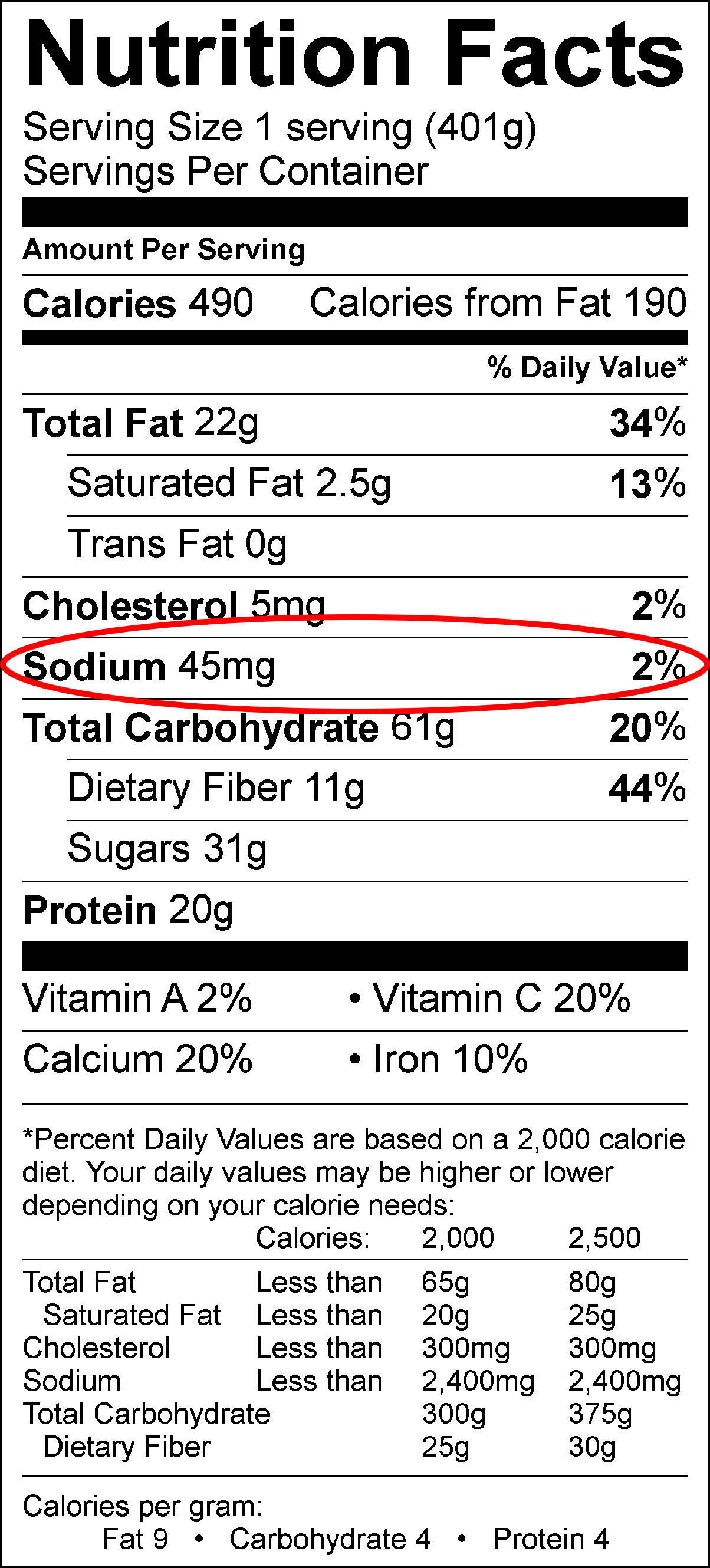
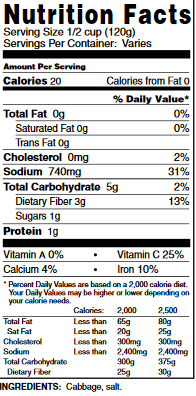

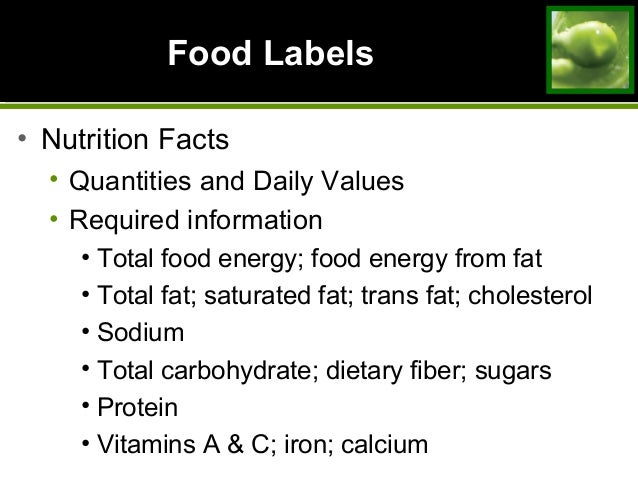
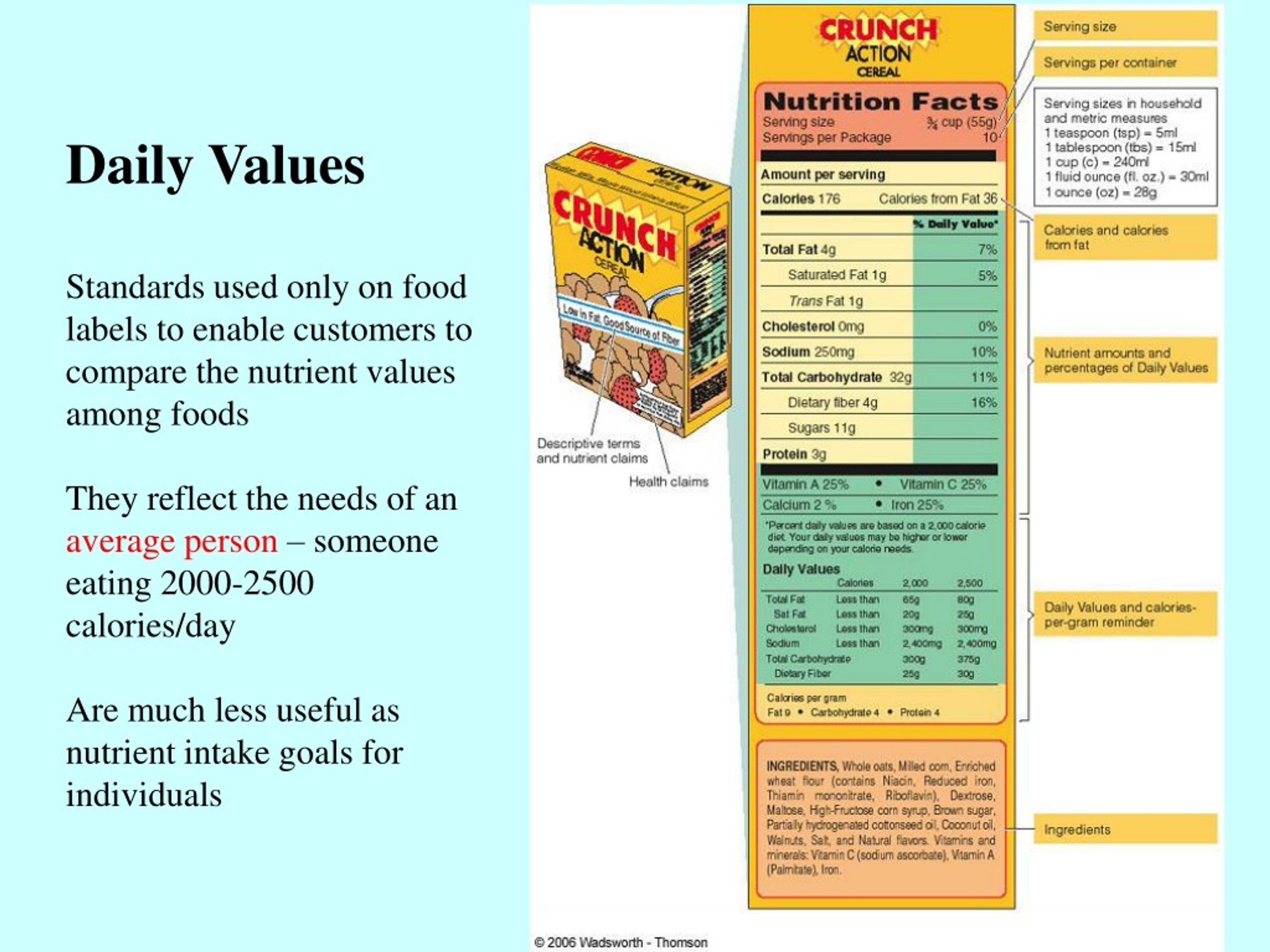






Post a Comment for "39 daily values on food labels"